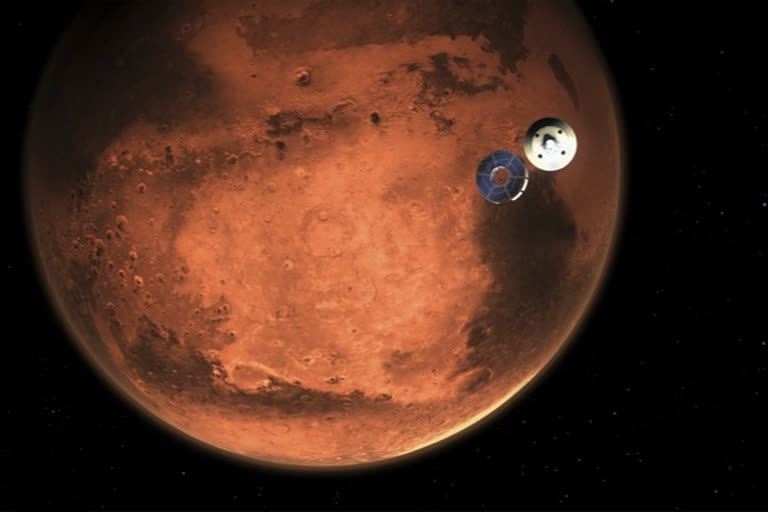Cape Canaveral: A NASA rover streaked toward a landing on Mars on Thursday in the riskiest step yet in an epic quest to bring back rocks that could answer whether life ever existed on the red planet.
Ground controllers at the space agency’s Jet Propulsion Laboratory in Pasadena, California, settled in nervously for the descent of Perseverance to the surface of Mars, long a deathtrap for incoming spacecraft. It takes a nail-biting of 11 1/2 minutes for a signal that would confirm success to reach Earth.
The landing of the six-wheeled vehicle would mark the third visit to Mars in just over a week. Two spacecraft from the United Arab Emirates and China swung into orbit around the planet on successive days last week.
All three missions lifted off in July to take advantage of the close alignment of Earth and Mars, travelling some 300 million miles in nearly seven months.
Perseverance, the biggest, most advanced rover ever sent by NASA, stood to become the ninth spacecraft to successfully land on Mars, every one of them from the U.S.
Read:| Chinese spacecraft nearing Mars, world’s second in 2 days
The car-size, plutonium-powered rover was aiming for NASA’s smallest and trickiest target yet: a 5--by-4-mile strip on an ancient river delta full of pits, cliffs and fields of rock.
Scientists believe that if life ever flourished on Mars, it would have happened 3 billion to 4 billion years ago when water still flowed on the planet.
Scientists hope to answer one of the central questions of theology, philosophy and space exploration.
“Are we alone in this sort of vast cosmic desert, just flying through space, or is life much more common? Does it just emerge whenever and wherever the conditions are ripe?” said deputy project scientist Ken Williford. “Big, basic questions, and we don’t know the answers yet. So we’re really on the verge of being able to potentially answer these enormous questions.”
China’s spacecraft includes a smaller rover that also will be seeking evidence of life — if it makes it safely down from orbit in May or June.
Perseverance’s descent has been described by NASA as “seven minutes of terror,” in which flight controllers can only watch helplessly. The preprogrammed spacecraft was designed to hit the Martian atmosphere at 12,100 mph (19,500 kph), then use a parachute to slow it down and a rocket-steered platform known as a sky crane to lower the rover the rest of the way to the surface.
Mars has proved a treacherous place: In less than three months in 1999, a U.S. spacecraft was destroyed upon entering orbit because engineers mixed up metric and English units, and an American lander crashed on Mars after its engines cut out prematurely.
Read:| UAE makes history as Hope Probe successfully enters orbit around Mars
NASA is teaming up with the European Space Agency to bring the rocks home. Perseverance’s mission alone costs nearly $3 billion.
The only way to confirm — or rule out — signs of past life is to analyze the samples in the world’s best labs. Instruments small enough to be sent to Mars wouldn’t have the necessary precision.
“The Mars sample return project is probably the most challenging thing we’ve ever attempted within NASA,” said planetary science director Lori Glaze, “and we don’t do any of these things alone.”
AP




